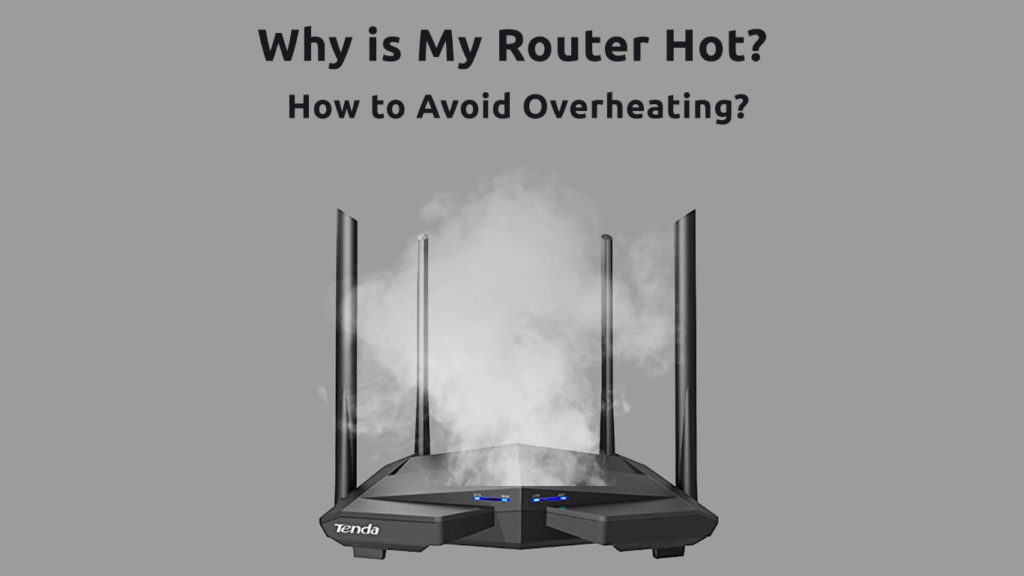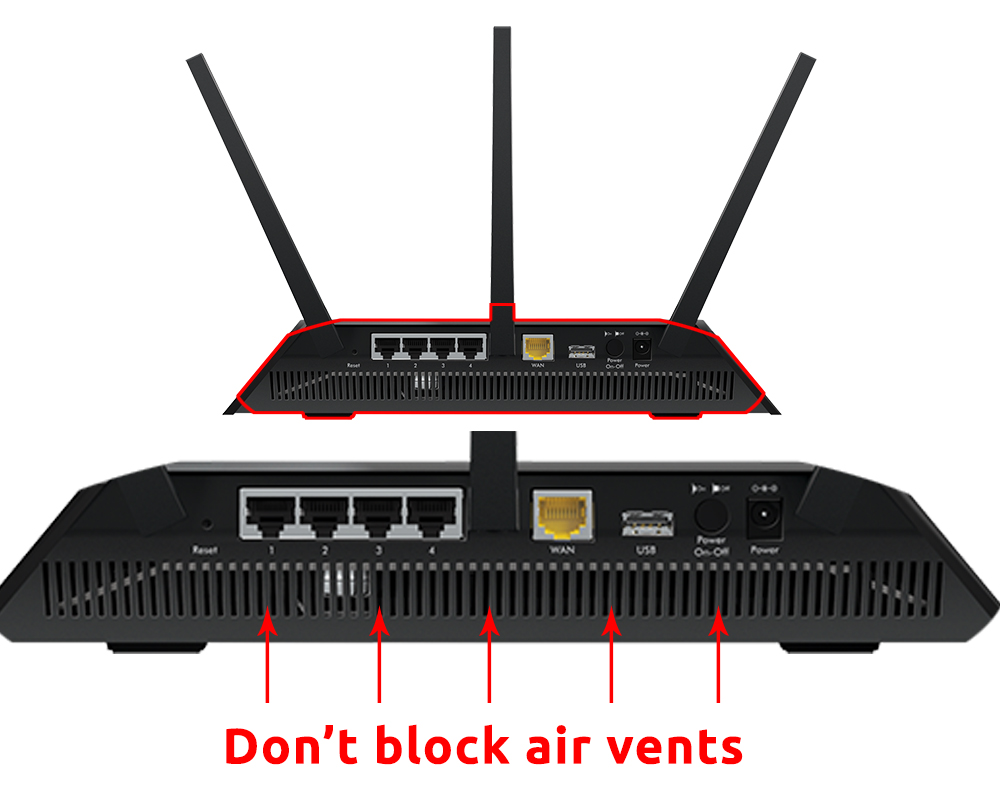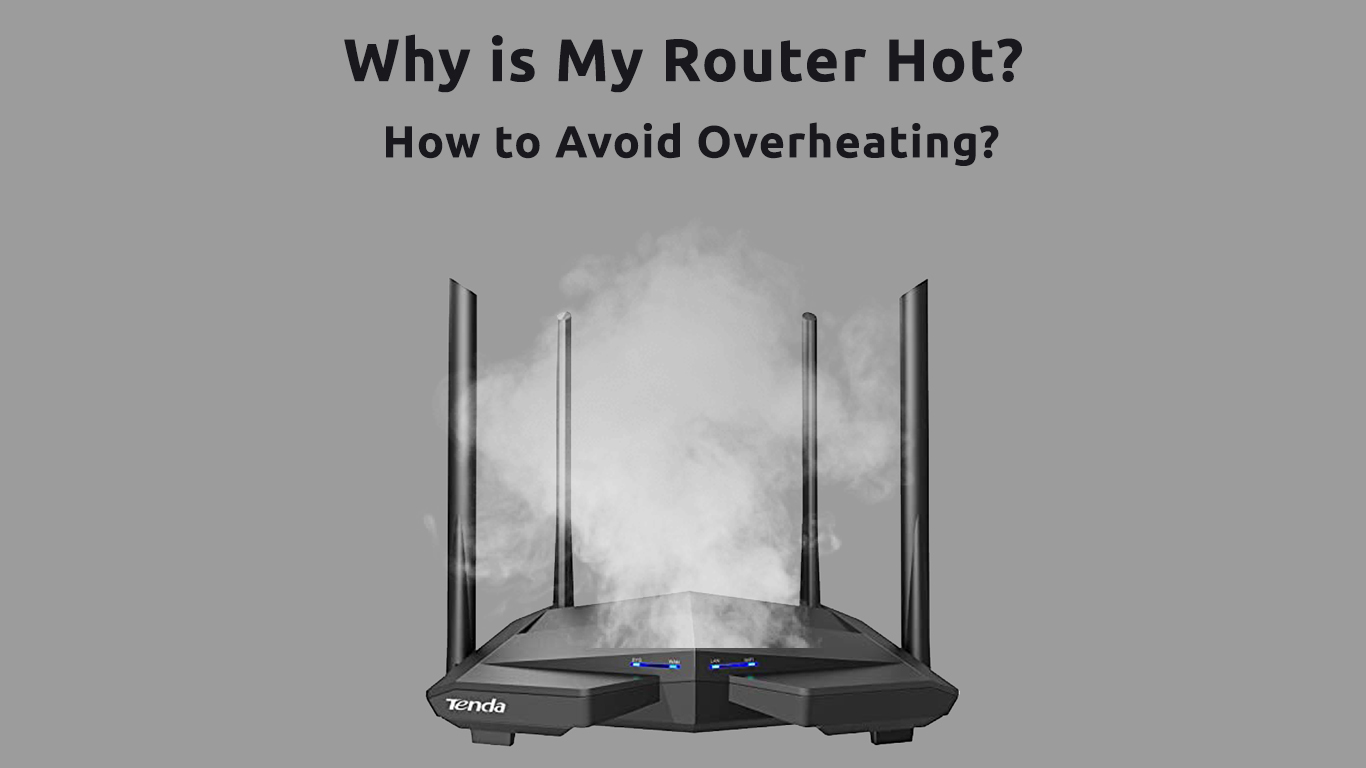Is it normal for a router to be hot? With increased internet usage, the electronic devices associated with the internet connection like a router and modem can easily overheat. When that happens, the result can be disastrous – a drop in Wi-Fi speed, loss of the internet connection, router malfunction, and worst, the malfunction of other connected hardware.
Unlike computers and many other electronic devices, you can hardly find the router hot because it consumes less power. However, a router can overheat when you place it in a cramped space with no airflow or cooling fan. This post will tell you why routers overheat, what happens when they overheat, and recommend some methods to prevent overheating. Let’s dive in.

CONTENTS
Why Your Router Gets Hot?
Although they built routers to run continuously for a long time without getting hot, they can still overheat due to various reasons:
Blocked Air Vents
Routers usually don’t come with cooling fans, but they have air vents on the sides. These air vents act as a passage for hot air coming from the internal parts to flow out. At the same time, they allow cooler external air to flow in, keeping the internal components cool.
When you place certain objects near or around the router, they block the airflow. It’s a bad idea to place the router in tight or enclosed spaces such as a cabinet, drawer, box, or other areas with restricted airflow. Doing so will limit air movement in the router and, as a result, the router may overheat.

If you have a lot of open spaces in your house, there’s an easy fix to solve this problem. All you need to do is put the router in one of the open spaces. If that’s not possible, try to put it at a higher ground like a shelf. Another option is getting a wall-mount and fixing the router to an open wall space. As a general rule, ensure you allow a distance of at least five feet from other objects. That arrangement should be comfortable enough for your router to ‘breath’ and avoid overheating.
Hot Surrounding
If you live in a hot climate, the room or space where you put the router can be too hot, especially when you don’t have air-cond or when the air-cond is not switched on. As a result, there is no cool air to help reduce the router’s temperature.
In addition, it does not help if you place the router close to other electronic devices such as a TV or an air purifier since it will make the air a lot hotter around the router.
The best solution to overcome this inherent problem is to install a cooling fan. Although the air is hot, a cooling fan produces air movement and circulation, which is a lot better than static air. It’s worth mentioning that cooling fans are pretty cheap, and you can quickly install them yourself without needing help from a technician. Therefore the cooling fans will help you overcome your router’s heating problem.
Bad Router Design
There are a multitude of router manufacturers and even more router models available in the market. Sometimes, you make a bad buying decision by purchasing a router that can easily overheat due to its bad design. The manufacturer could have used a chip that creates heat in the circuitry. Another design mistake is the failure to create adequate air vents on the router’s sides. These inherent bad designs will cause constant heating issues.
To avoid buying a bad router, it’s probably best to check online product reviews from previous buyers to see if anyone complained about the heating issues in the specific router model. These reviews can provide a useful guide on how to find a good router that gives little or no problems, especially when it comes to overheat-related issues.
Faulty Power Supply Unit
Sometimes, your router can get hot not because of all the reasons mentioned above but because of a faulty power supply unit or the PSU. If you’re using a non-standard PSU that gives more than the usual 12V, the over-supply can cause the router to get hot. You can fix this issue by simply checking on the PSU and replacing it.
Too Many Simultaneously Connected Devices
These days, a lot of work is done from home. Luckily, most routers and gateways can easily handle multiple devices. Understandably, every family has a bunch of simultaneously connected devices.
However, a router has a limitation on how many devices can connect at the same time. If it exceeds the specified number of connected devices, your router may start to falter and produce excessive heat.
If your router overheats because the number of connected devices is too high, try to figure out which devices are not required. Sometimes, family members happen to connect all devices they have and keep them connected even if they don’t need to use those devices. So, it’s wise to disconnect those devices for a while, and you can always reconnect them when they’re needed. Alternatively, if your budget permits, buy another router with a bigger capacity to take up more devices simultaneously.
Ways to Prevent Router Overheat
What Happens When Your Router Gets Too Hot?
It’s perfectly fine if your router gets a little warm due to continuous operation. However, if it gets too hot, it could cause problems with your internet connection and could even result in hardware malfunction.
Internet Disconnection
When your router overheats, the most common issue that you can experience is reduced internet speed. If you’re unlucky, you can even lose the connection. It would help if you switched off the router and let it cool for a while before reconnecting it. When the router is cool again, your internet connection speed should get back to normal. If the router gets hot again after a while, it’s almost certain that the heat is causing your connection to drop.
Hardware Breakdown
Just like computers and other electronic devices, the router’s overheating may also cause its hardware to stop functioning. When the temperature reaches a specific heat limit, the internal parts will start to deteriorate. Your router will reboot whenever the heat limit is exceeded in order to save internet parts but, in the end, your router will stop working altogether unless you do something.
Conclusion
Router getting hot should not pose a problem to you anymore if you have gone through this post where we have laid down the most common causes and corresponding fixes. You will also appreciate the fact that you can always leave the router to operate continuously without switching it off as long as it gets adequate ventilation.
That said, it’s helpful to know that a router should still work fine as long as its temperature does not exceed 100 degrees Celcius. Beyond that, it will start to falter and give a slower performance. The best operating temperature is around 70-80 degrees Celcius. We’re talking about router temperature, not the ambient temperature. The optimal ambient temperature is 70-75°F.
One more thing before you leave – If you’re not going to use your router for some time, don’t forget to turn it off and let it rest.

Hey, I’m Jeremy Clifford. I hold a bachelor’s degree in information systems, and I’m a certified network specialist. I worked for several internet providers in LA, San Francisco, Sacramento, and Seattle over the past 21 years.
I worked as a customer service operator, field technician, network engineer, and network specialist. During my career in networking, I’ve come across numerous modems, gateways, routers, and other networking hardware. I’ve installed network equipment, fixed it, designed and administrated networks, etc.
Networking is my passion, and I’m eager to share everything I know with you. On this website, you can read my modem and router reviews, as well as various how-to guides designed to help you solve your network problems. I want to liberate you from the fear that most users feel when they have to deal with modem and router settings.
My favorite free-time activities are gaming, movie-watching, and cooking. I also enjoy fishing, although I’m not good at it. What I’m good at is annoying David when we are fishing together. Apparently, you’re not supposed to talk or laugh while fishing – it scares the fishes.


Thank you v clear